COMMON EDIBLE WEEDS IN HAWAI‘I / ID + RECIPES (download as booklet)
– – – – – – – – – – – –
(Amaranthus) Amaranth / Kalunay / Kulitis / Pigweed / 莧菜 / राजिगराा


There are countless varieties of Amaranthus plants. Stems can be red or green. There is even a spiny variety. Leaves can be hairy or hairless. Flower clusters have a distinctive look though can range in size.
Tender leaves, flowers and stalks are great for stir-frys. Add to soups, omelettes, or oatmeal. Mature seeds of certain amaranth varieties are also used as a grain. (video on ID, harvest + cooking)
Amaranth Coconut Milk (download)
Amaranth Goma-ae (download)
Banchan Amaranth (download)
Amaranth Hush Puppies (download)
Amaranth Ohitashi (download)
Stir-Fry Amaranth Leaves (download)
– – – – – – – – – – – –
(Coccinia grandi) Ivy Gourd / Pak Tum Lung / 红瓜 / आइवी लौकी / Tindora


Long vines with tendrils, often rooting at the nodes. Flowers are white with pointy petals. Fruits resemble tiny watermelons and ripen deep red.
Young shoots can be used raw in salads, stir-fried, and added to soups and stews. Ripe gourds are bitter and can used like bitter melon. Often made into curries. (video on ID, harvesting + cooking)
Ivy Gourd Shoots Omelette (download)
Ivy Gourd Shoots Stir Fry (download)
– – – – – – – – – – –
(Lepidium virginicum) Pepper Grass / Virginia Pepper Weed / 北美独行菜 / 豆軍配薺 / culantrillo / cresson a savane


Flower clusters form along a central stem. The somewhat hairy leaves are lance-shaped.
The entire plant is edible. Young leaves can be used raw in salads, or sautéed. The young seedpods can be used as a substitute black pepper. This entire plant can be put into a food processor along with turmeric, vinegar, miso, garlic and salt to make wild mustard. Crushed roots with vinegar and salt can be used as a horseradish substitute. Due to its medicinal properties eat sparingly. It is used as an antiamoebic in traditional Mexican medicine.
– – – – – – – – – – –
(Portulaca oleracea) Purslane / 쇠비름 / Khorfeh / Luni-bhaji / Yerba Orate / 马齿苋 / Bakleh / 滑草/すべりひゆ


Purslane grows lowish to the ground. Their green or reddish stems come from a central taproot. Smooth leaves grow out from the stalk in a four leaf star configuration. NO sticky white liquid come out of purslane when you harvest.
Stems, leaves and flower buds can be used raw in salads, or stir-fried. Also can be added to soups and stews. (video on ID, harvesting + cooking)
Potato with Purslane (download)
– – – – – – – – – – –
(Oxalis) Wood Sorrel / agsom / ‘ihi ‘ai / カタバミ / sour grass / ‘i‘i / trèfle jaune


Oxalis has three heart-shaped leaflets and pink or yellow flowers with five petals.
All parts of the plant can be eaten. Add leaves, flowers, and young seed pods to salads, use in soups and sauces. Has many medical properties. (video on ID, harvesting + cooking)
– – – – – – – – – – – –
(Plantago) Laukahi / おおばこ / Piantaggine / प्लैन्टैगो मेजर / لسان الحمل / Common Plantain / White Man’s Foot

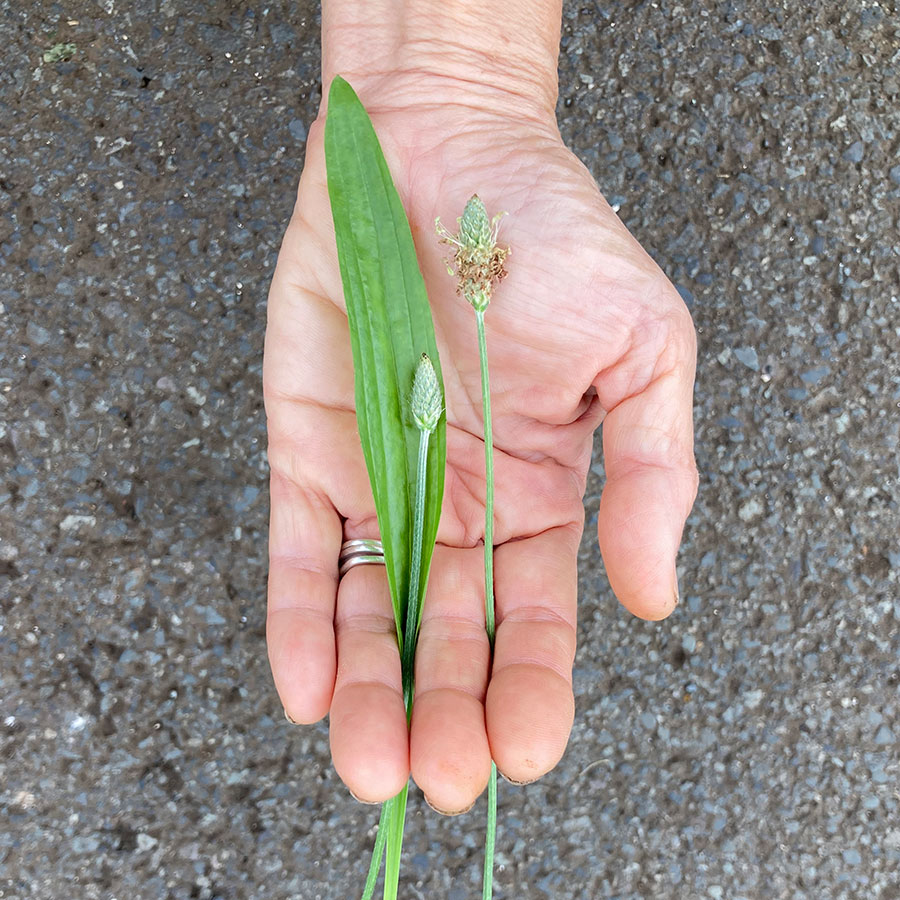
Plantago has leaves with distinctive parallel veins and tall green flower stalks.
Use young leaves raw in salads, or cook via stir-fry, add to soups and stews. Dried seeds can be used as a grain sparingly. Plantago has also been used widely medicinally to manage a wide range of diseases including constipation, coughs, skin irritations and wounds. MORE
Laukahi Seed Kiawe Rolls (download)
– – – – – – – – – – – –
(Taraxacum) Dandelion / सिंहपर्णी / diente de león / タンポポ / 蒲公英


Dandelion leaves are hairless and generally have toothed edges. There is only one flower per stem vs look-alike plants. Root, leaves and stem all exude a milky white sap.
The bitter leaves can be eaten raw, steamed or added to stir-fries and soups. The flowers are sweet and crunchy. They can be eaten raw, or breaded and fried, or used to make syrup or wine.
– – – – – – – – – – – –
(Drymaria Cordata) Tropical Chickweed / 荷莲豆草 / अभिजालो / West Indian Chickweed / Laijabori
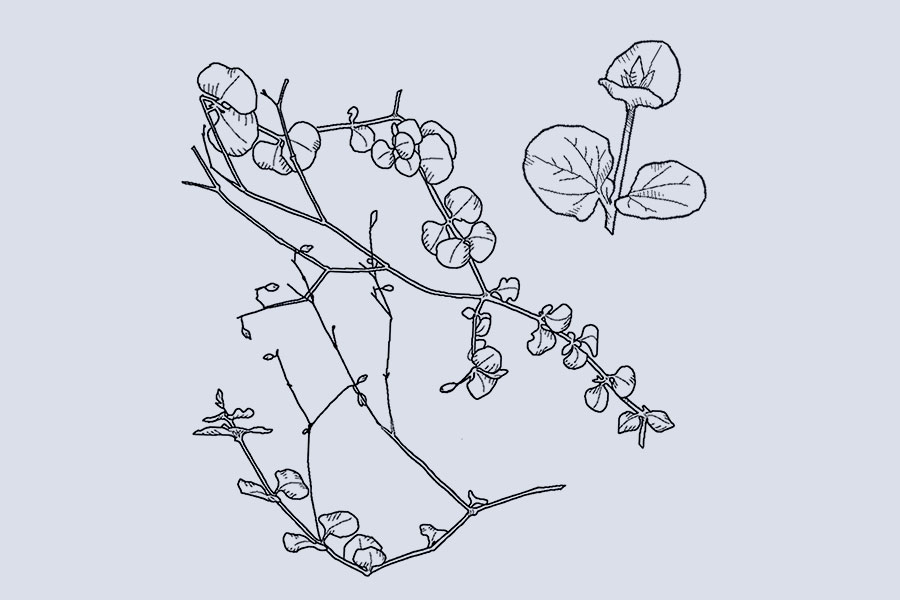
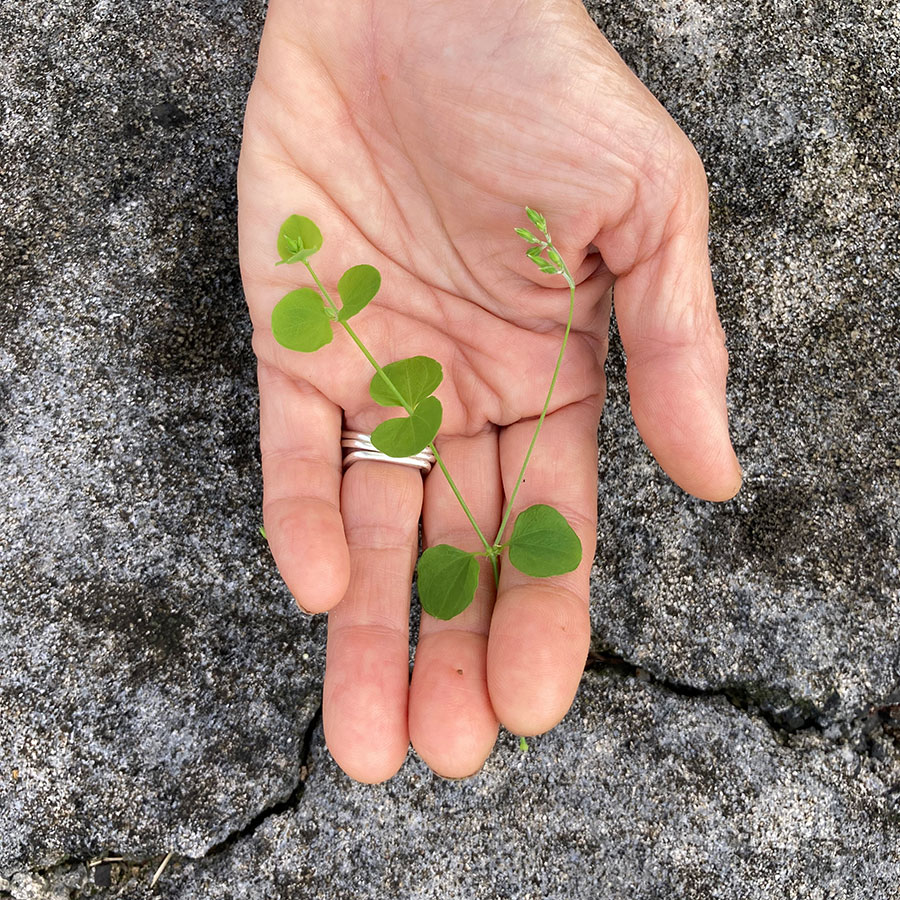
Leaves are roughly heart shaped with very short stems, and grows opposite to each other. Stems are thin and smooth, frequently rooting at the nodes. Tiny white lowers on long stalks. Does NOT have milky sap.
Mild in flavor, young leaves can be eaten raw in a salad or cooked. Eat sparingly.
– – – – – – – – – – – –
(Asystasia gangetica) Chinese Violet / 赤道櫻草 / Coromandel / Creeping Foxglove
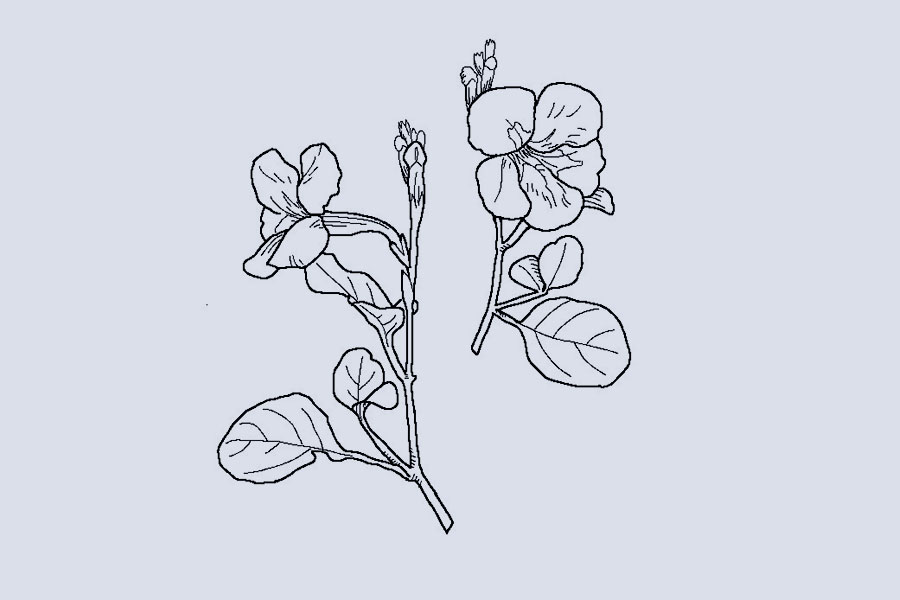

Ground cover plant that trails and climbs. Leaves grow opposite of each other and stems root easily at the nodes. Flowers are about 1 inch diameter and in several different colors – white, pink, and lavendar.
Use new growth, tender leaves and flowers only. Older stems are quite fibrous. Flowers can be used in salads. Tender leaves and stems can stir-fried or boiled as a spinach substitute. Good in soups. (video on ID, harvesting + cooking)
Chinese Violet Chips (Recipe by Sunny Savage)
– – – – – – – – – – – –
(Centella asiatica) Pohe kula / Gotu Kola / Kodavan / つぼ草 / Asiatic Pennywort / 积雪草 / 雷公根
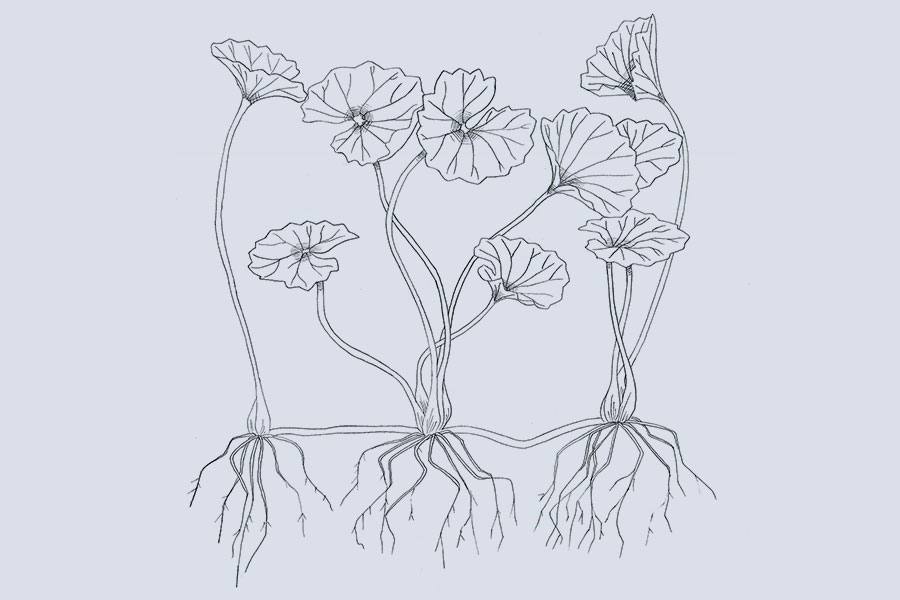

Long creeping runners that regularly produce roots at the nodes. kidney bean-shaped or fan-shaped medium green leaves with serrated edges. Flower in small clusters.
Use as a leafy green cooked or raw. A common ingredient in Sri Lankan mallung. Can also be made into juice.
Pohe Kula Sambola (download)
– – – – – – – – – – – –
(Stachytarpheta jamaicensis) Blue Porterweed / Indian Snakeweed / Blue Snakeweed / Nettle-leaved Vervain / 假马鞭 / 长穗木


A shrub approximately 1- 3′ in height with branches that trail on the ground. Leaves have serrated edges that grow opposite to each other, about 3″ long. Flowers are blue with five petals. They grow on a spikey flower stem for only one day.
The flowers have a delicate mushroom like flavor. Great for a tiny snack and garnish. Dried leaves are used for tea.
Tips from Green Deane
– – – – – – – – – – – –
(Commelina diffusa) Honohono Grass / climbing dayflower / Blue Snakeweed / Nettle-leaved Vervain, 假马鞭, 长穗木


A vine that creeps mostly along the ground, branches abundantly and roots at the nodes. Leaves come to a point. Flowers are small and bright blue with 3 triangular petals.
Young leaves and blue flowers can be eaten raw in salads, or juiced for flavoring. Young stems can be steamed and eaten as cooked greens.
Honohono Grass Ice Cream (download)
Honohono Tofu Curry (Recipe by Windward Community College)
BASIC RULES ABOUT FORAGING
1. Never harvest more than you need. Leave some for other creatures and for the plants to regrow.
2. Observe if the area has been treated with pesticides and herbicides. Talk with those who maintain the area. Even if plants are sprayed it does not impact new growth after the spraying. Roots are more of a concern since toxicity can remain in the soil.
3. Tend the area like it is your garden to ensure continued availability.
REFERENCES
+ A Hiker’s Guide to Trailside Plants in Hawaii (2008). John Hall
+ Edible Wild Plants: Eastern/Central North America (1999). Lee Allen Peterson and Roger Tory Peterson
+ Identifying and Harvesting Edible and Medicinal Plants in Wild (and Not So Wild) Places (1994). Steve Brill and Evelyn Dean
+ Natty by Nature
+ Wild Food Plants of Hawai‘i (2015). Sunny Savage